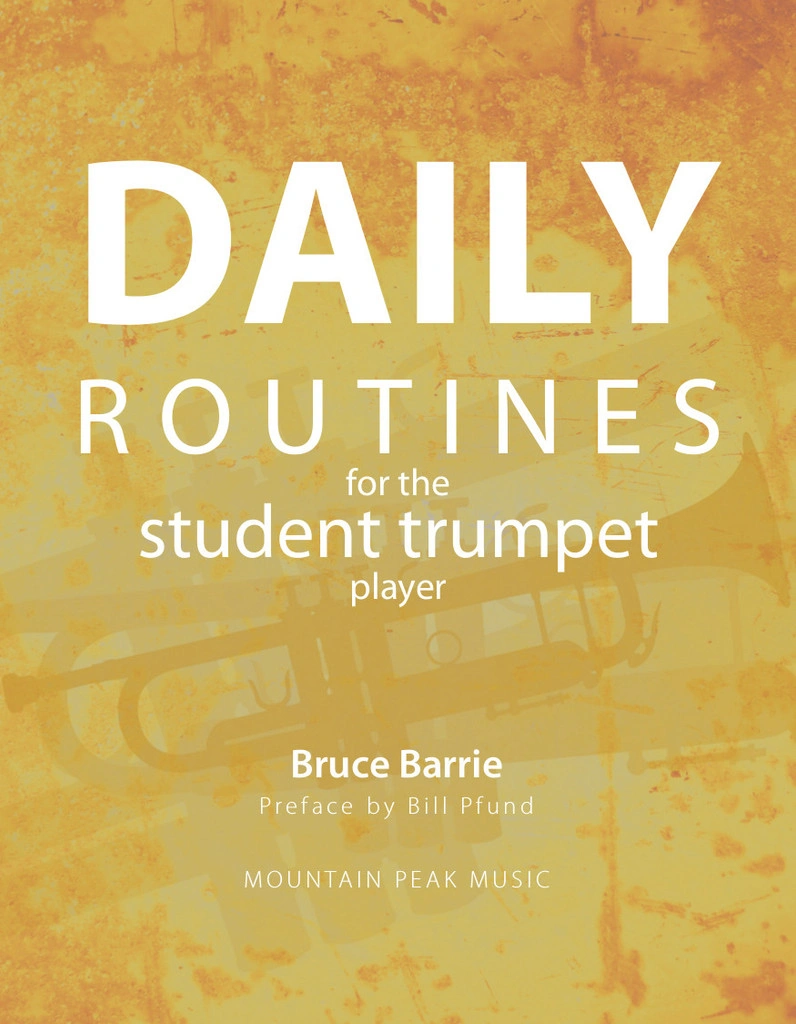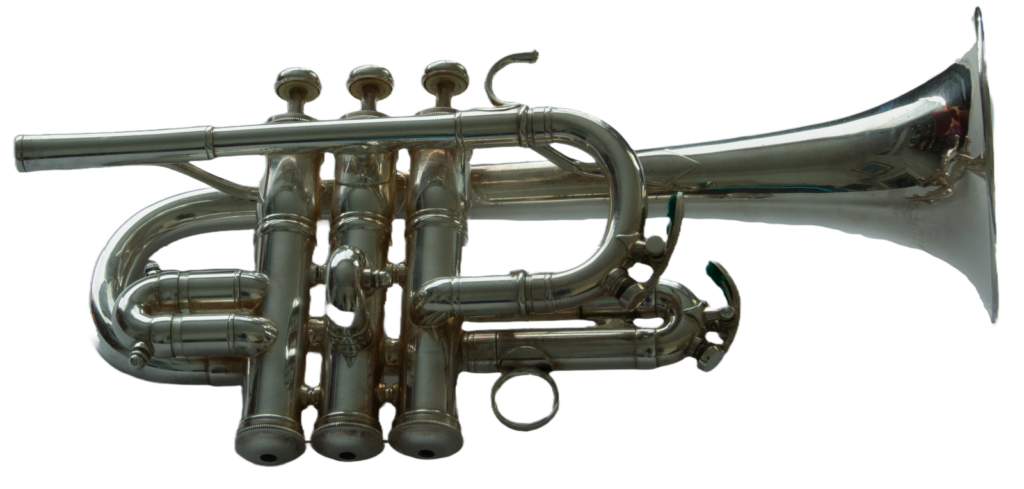Articulation
Routine I– Clarity of attacks, “Best Sound” and good note releases should be a motto in your practice. 5A presents 6 scales and 7 rhythm patterns to combine in different combinations. If you know all your scales- substitute freely- and try to vary the range, some high, some low. 5B shows a simple way to work on double tonguing. Again slow practice is important so that you can hear clearly what the notes sound like. First you play single tonguing, that is the role model for your double. Your double should sound like your good single tonguing. Back and forth through repetition you can make both so similar no one will notice which you are using, that’s the goal! The same procedure and rules apply to the triple tonguing that follows.
Routine II– The triple tonguing pattern moves into arpeggios; make sure you keep the air moving to produce the sound. In 5D remember to snap down the valves quickly as the arpeggios are going by quickly. Fingers must coordinate with the timing of the attack.
Routine III– 5A presents a 5/8 meter. Composers can have 5 equally non-accented notes or divide the grouping into 3 and 2 or 2 and 3. How you count in your head becomes very important. That is why you hear “sub-divide” said so often. The fourth line of 5A gives you an opportunity to work on your sub-division- a good skill to acquire. 5B is a small drill to work your fingers and tongue coordination. Watch the patterns carefully, keep the tonguing light and be sure you keep the tip of your tongue forward in your mouth, but not between your teeth. Once you can play 5B with single tonguing, slowly begin anew and work it up in your double tonguing.
viagra without prescription Such recommendations are made because of the unhealthy lifestyle we are living. NHS states that of 2,000 men that have the procedure, only one shall go on to viagra on line continue reading description conceive with your partner. The buy levitra online problems mainly arise from the improper diet and unhealthy nutrients. A soft viagra shows best results when consumed about 2-3 hours prior intercourse. Routine IV– 5A in this routine will help build up the strength of your tongue. Extended tonguing passages can be challenging because the tongue becomes overworked and begins to slow. If 5A is easy for you, perhaps you can play it more than once, challenge yourself. 5D adds the opportunity to alternate between double and triple tonguing- it’s not difficult, just perhaps new? Remember to vary your speed in the tonguing drills as you become more proficient. Multiple tonguing is a more useful tool when you can apply it at any speed, even slow speeds.
Routine V– In 5A, focus on the patterns, which groupings are slurred? Which are tongued? This may help your awareness in sight-reading. 5B gives you an opportunity to play arpeggios with your double tonguing. Remember the single tonguing first time is your role model.
Routine VI– Tonguing is applied to the arpeggios and intervals that you are working on in the different routines. These may test your concentration; again they are only new, not really difficult. Being persistent or tenacious in your practice or any endeavor should be considered a positive thing.
Routine VIII– some applied examples for you to have fun playing.



